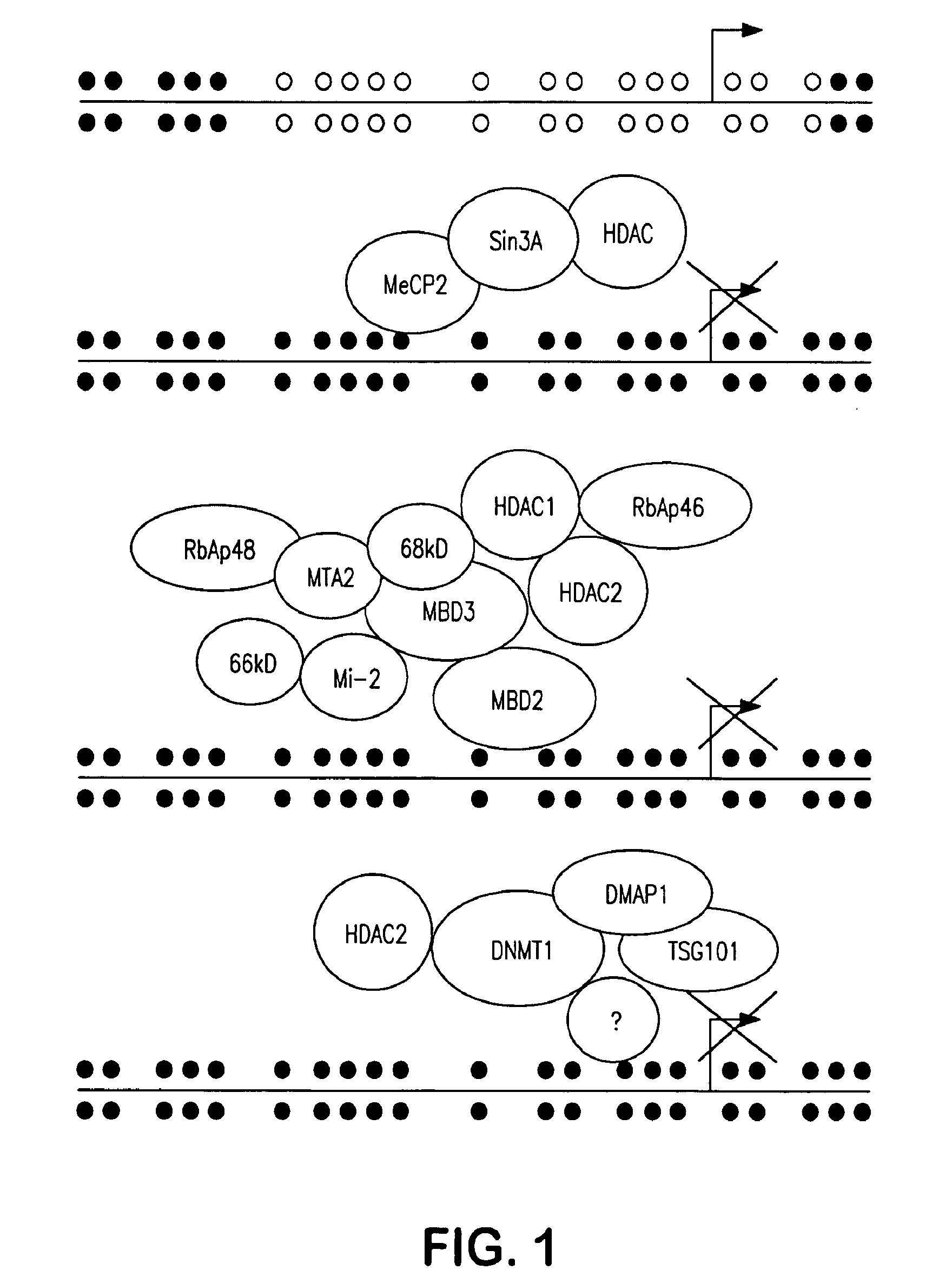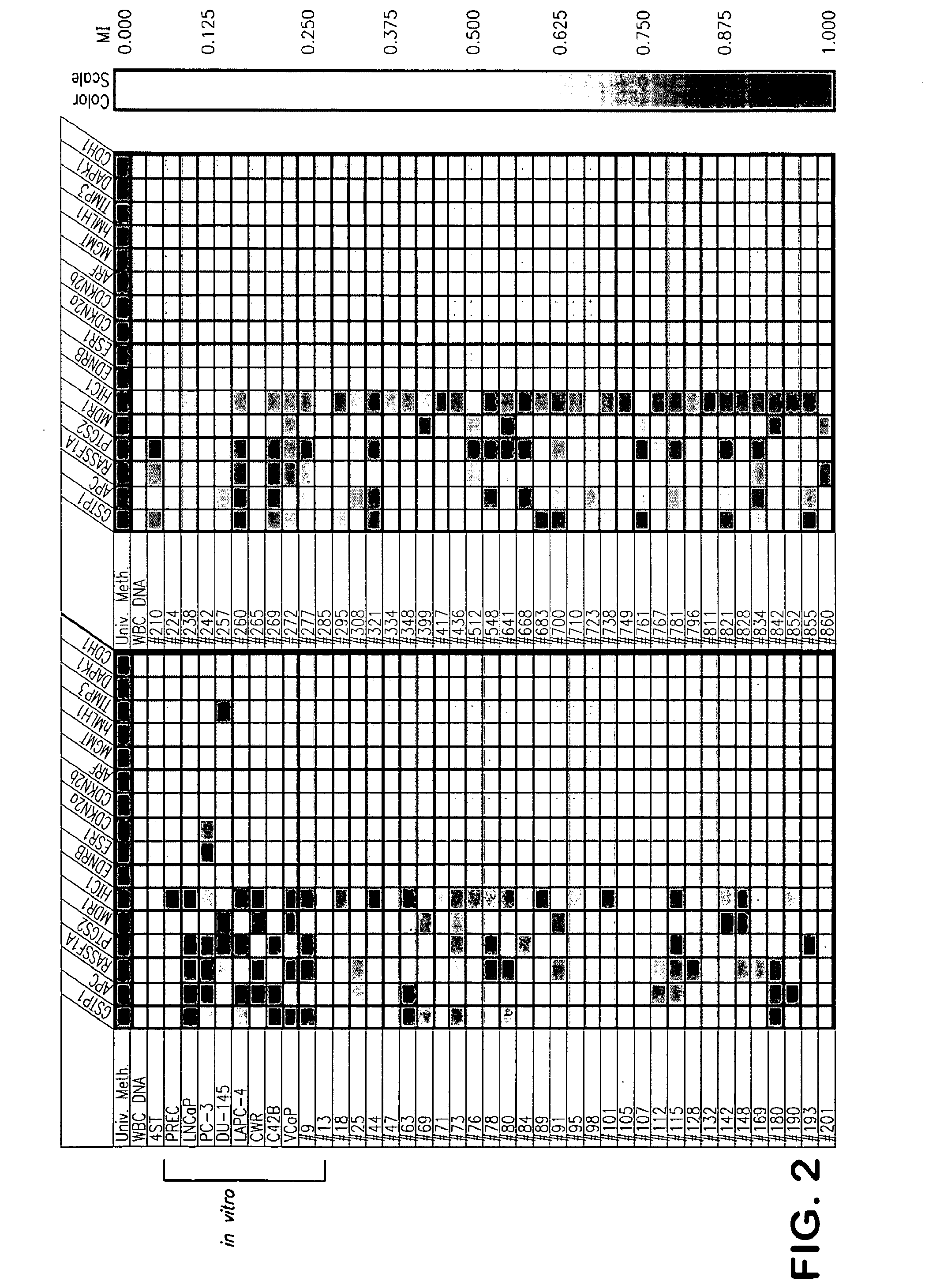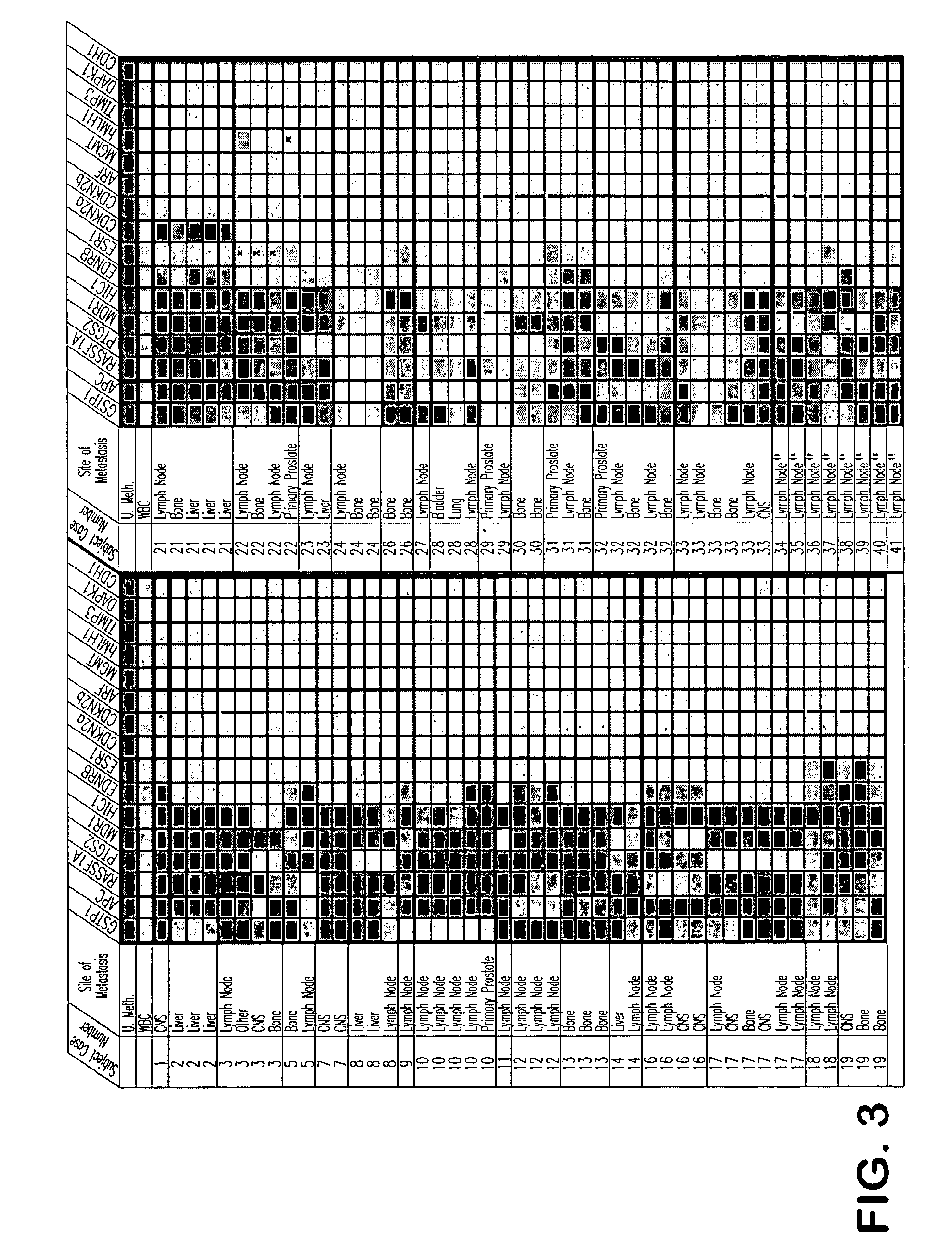Agents for reversing epigenetic silencing of genes
a gene and agent technology, applied in the field of methylation, can solve the problems of unfulfilled clinical trials of dnmt inhibitors, inability to fully realize the clinical utility of these compounds for cancer, so as to prevent or treat cancer, increase the transcription of genes, and prevent or treat sickle cell anemia.
- Summary
- Abstract
- Description
- Claims
- Application Information
AI Technical Summary
Problems solved by technology
Method used
Image
Examples
example 1
CpG Island Hypermethylation in the Pathogenesis of Human Prostate Cancer
[0105]Using quantitative DNA methylation-specific PCR (MS-PCR), the presence or absence of CpG island hypermethylation at GSTP1, APC, HIC-1, RASSF1A, PTGS-2, EDNRB, MDR1, ESR1, TIMP3, CDKN2A, CDKN2B, MLH1, MGMT, DAPK1, CDH1, and ARF, was assessed using genomic DNA from various human prostate cancer cell lines cultivated in vitro, as well as from primary and metastatic prostate cancer cases (FIGS. 2-4). Next, when laser capture micro-dissection was used to selectively isolate epithelial cells from normal prostate, from proliferative inflammatory atrophy (PIA) lesions, from prostatic intraepithelial neoplasia (PIN) lesions, and from prostatic carcinomas, analysis of genomic DNA by MS-PCR revealed the appearance of GSTP1 CpG island hypermethylation in prostate cancer precursors (PIA and PIN) as well as prostate cancers (FIGS. 5-7).
[0106]MBD2 mediates repression of GSTP1 genes with hypermethylated CpG islands in MCF...
example 2
Discovery of Small Molecule MBD Antagonists
[0108]To identify and characterize small molecules that antagonize MBD2-mediated repression of transcription from genes with hypermethylated CpG islands, three objectives were pursued.
[0109]A 2-stage “high-throughput” screening strategy identified “lead” compounds from a chemical diversity library (a ChemBridge collection of n=10,000 compounds). A 2-stage screening strategy exploited the dependence of transcriptional repression associated with GSTP1 CpG island hypermethylation on MBD2, to identify MBD2 pathway inhibitors (see Example 1). siRNA-triggered “knock-down” of MBD2 protein levels in human cancer cells is known to alleviate repression of hypermethylated GSTP1 promoter sequences both for transfected promoter / reporter constructs (FIG. 11), the basis for the first screening stage, and for native GSTP1 alleles in situ (FIG. 10), the basis of the second screening stage. The integrated screening strategy involved: stage 1, a readily scala...
PUM
| Property | Measurement | Unit |
|---|---|---|
| molecular weight | aaaaa | aaaaa |
| molecular weight | aaaaa | aaaaa |
| pH | aaaaa | aaaaa |
Abstract
Description
Claims
Application Information
 Login to View More
Login to View More - R&D
- Intellectual Property
- Life Sciences
- Materials
- Tech Scout
- Unparalleled Data Quality
- Higher Quality Content
- 60% Fewer Hallucinations
Browse by: Latest US Patents, China's latest patents, Technical Efficacy Thesaurus, Application Domain, Technology Topic, Popular Technical Reports.
© 2025 PatSnap. All rights reserved.Legal|Privacy policy|Modern Slavery Act Transparency Statement|Sitemap|About US| Contact US: help@patsnap.com



